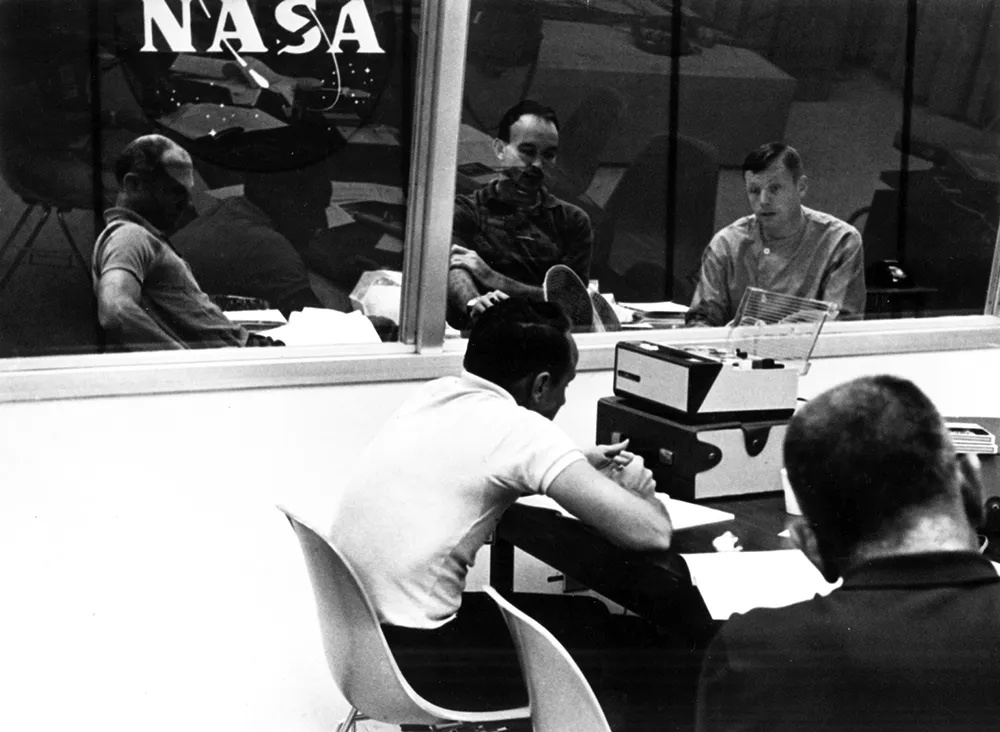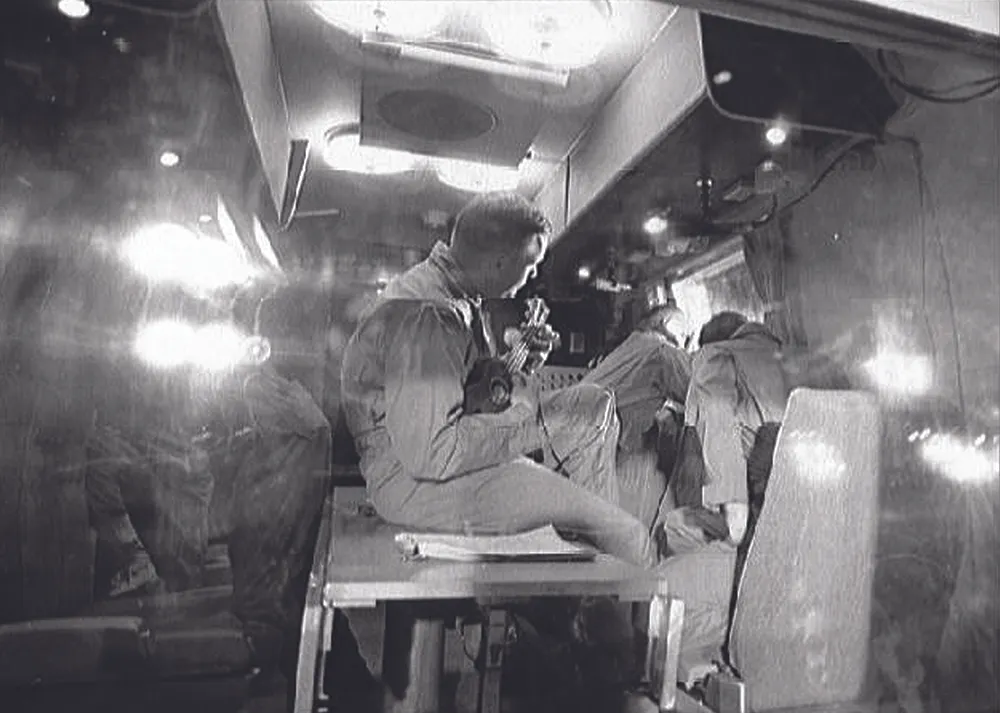The Apollo 11 crew were isolated for two weeks on their return from the Moon, along with all lunar samples. This was the time deemed necessary to run biological tests on the rock samples and to give any lunar pathogens a chance to incubate.
The Moon is, and almost certainly always has been, a lifeless world. But scientists couldn’t be sure of that fact in the early 1960s when the Apollo project was taking shape, and NASA took the issue of back-contamination – accidentally releasing extraterrestrial microbes on Earth – very seriously.
An entirely new building was designed to quarantine the astronauts and Moon rocks.
- The Apollo 11 mission patch: how it came to be
- 10 facts about the Moon landing missions
- Where did the Apollo astronauts land on the Moon?
Called the Lunar Receiving Laboratory (LRL), it was built at a cost of $15.8 million at NASA’s Manned Spacecraft Center (MSC, now the Johnson Space Center) between 1966 and 1967.
With a floor area of 7,700m2, it was big enough to accommodate not only the astronauts but more than a dozen support staff, including doctors, lab technicians, stewards, a photographer, and a public affairs officer.
Isolation began as soon as Armstrong, Aldrin, and Collins splashed down in the central Pacific.

Before opening the command module hatch, they donned ‘biological isolation garments’ fitted with masks to trap any bugs they might exhale.
After a short helicopter trip to the aircraft carrier USS Hornet, a few strides took them into a silver Airstream trailer adapted to serve as a mobile quarantine facility.
Once on dry land, and still in their quarantine trailer, the crew were flown to Ellington Air Force Base in Houston, and then driven at jogging pace on a flatbed truck to MSC, where the trailer was connected by an airtight plastic tunnel to the Lunar Receiving Laboratory.
After walking through the tunnel, the astronauts entered a 40-room complex, which occupied about a third of the LRL.
Here, each had his own room, furnished simply with a bed, dresser, night table, chair and lamp.
In identical adjoining rooms were three physicians, one for each astronaut, to provide constant medical attention.
There was also a recreation room, shower, locker room, lounge, dining room and kitchen.
Medical emergency
Nearby, another complex of rooms contained one of the world’s most up-to-date medical centres, where the astronauts were subjected to exhaustive clinical, chemical and microbiological tests.
If any of the crew fell ill or needed minor surgery, equipment was on hand to cope, though in the event of a life-threatening emergency, the casualty would, it was decided, be transferred to a hospital regardless of any concerns about back-contamination.
Thankfully, such a situation did not arise.
The air that the astronauts and their companions breathed was completely sealed off from the outside world, with its own air conditioning system.

Animal and plant samples were exposed to lunar material within the LRL from behind biological barriers, including glove boxes built into the walls.
All the astronauts, having already spent a week in close confinement on their space mission, quickly found their new surroundings oppressive.
After a week, Michael Collins put it most succinctly when he said, “I want out.”
The crews of Apollo 12, and 14 were subjected to the same rigorous procedure.
But since no trace of alien infection was ever detected, the quarantine period was lifted from Apollo 15 on.
This article originally appeared in the Man on the Moon special edition magazine.